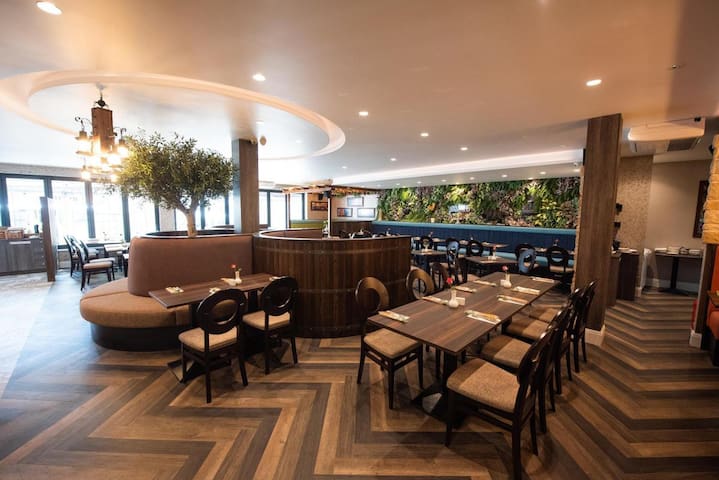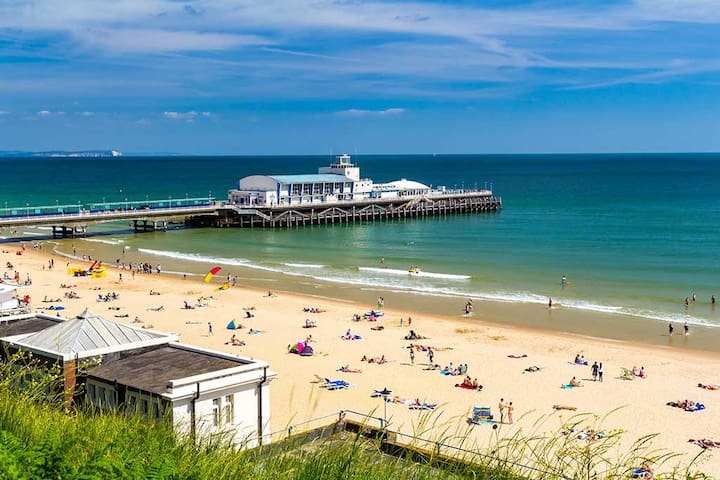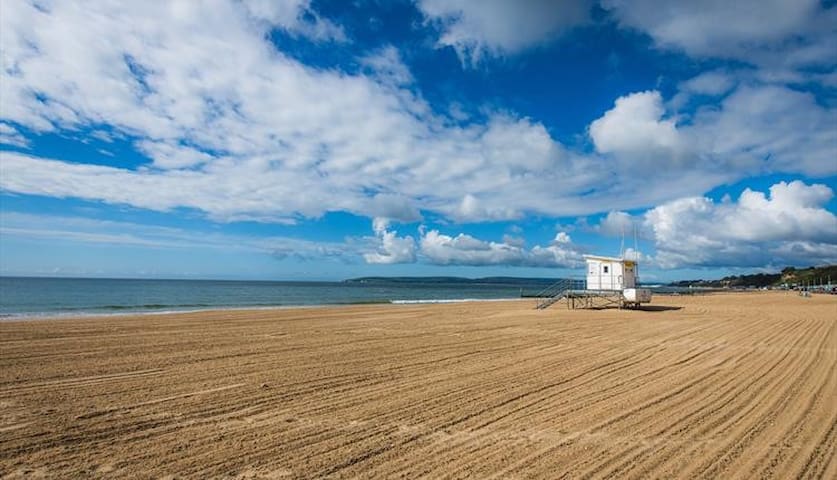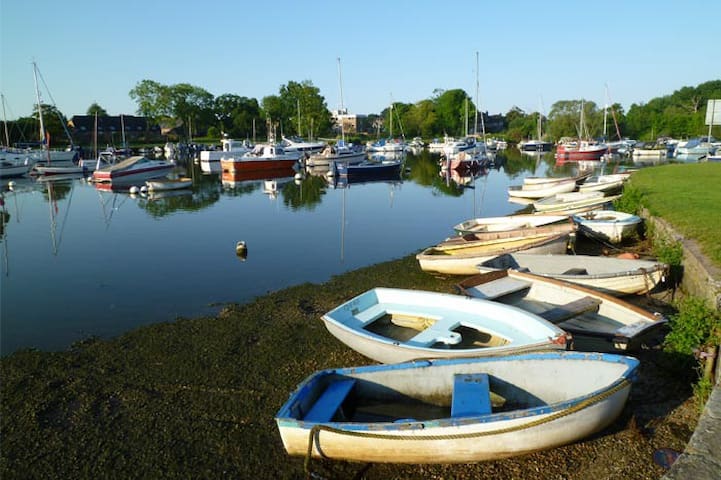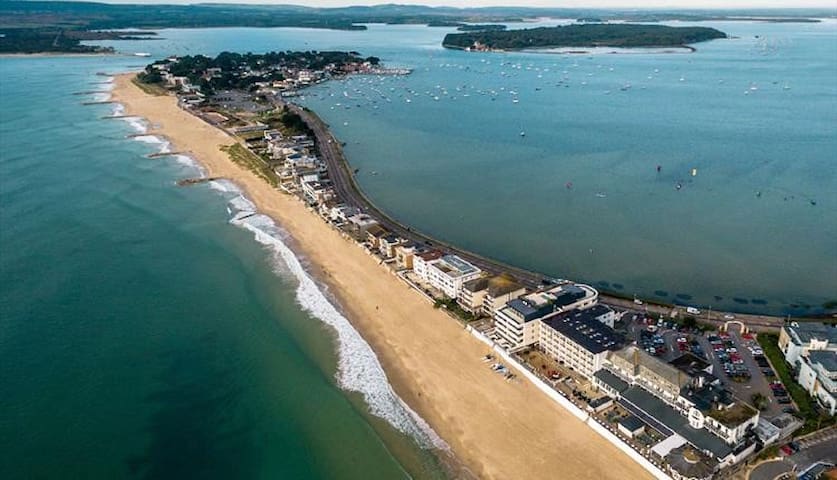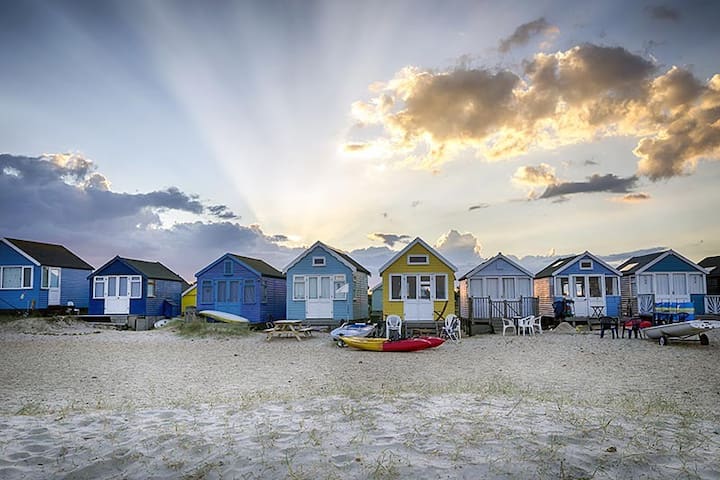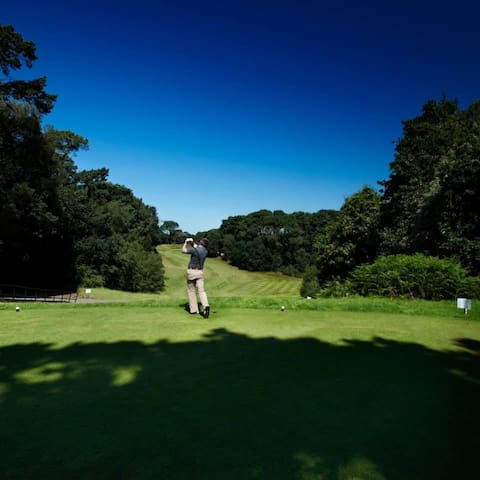Food scene
풀항만
Rick Stein, Sandbanks
10-14 Banks RdChristchurch HarSPA
95 MudefordRistorante Barolo
586-588 Wimborne RoadBaraca Restaurant
129 Charminster RdLola's Spanish Tapas Restaurant
95 Commercial RdBeaches
Bournemouth beach has been ranked among the best 25 beaches in the world, according to Tripadvisor's Travellers Choice awards.
149 명의 현지인이 추천하는 곳
본머스 비치
Bournemouth beach has been ranked among the best 25 beaches in the world, according to Tripadvisor's Travellers Choice awards.
Durley Chine Beach is one of Bournemouth's favourite Blue Flag award winning beaches
10 명의 현지인이 추천하는 곳
Durley Chine Beach
Durley Chine Beach is one of Bournemouth's favourite Blue Flag award winning beaches
Christchurch Harbour was formed about 7,000 years ago. Christchurch Quay and Quomps lie in the upper reaches of the harbour. The entrance to the harbour, known as 'The Run', is flanked by Mudeford Quay to the north and Mudeford Sandbank to the south.
40 명의 현지인이 추천하는 곳
Christchurch HarSPA
95 MudefordChristchurch Harbour was formed about 7,000 years ago. Christchurch Quay and Quomps lie in the upper reaches of the harbour. The entrance to the harbour, known as 'The Run', is flanked by Mudeford Quay to the north and Mudeford Sandbank to the south.
Winner of the Blue Flag award for over 30 years and with its soft golden sands and breathtaking views, it is no wonder that Sandbanks is considered one of Britain's best beaches
210 명의 현지인이 추천하는 곳
Sandbanks
Winner of the Blue Flag award for over 30 years and with its soft golden sands and breathtaking views, it is no wonder that Sandbanks is considered one of Britain's best beaches
Heading towards Christchurch, visit picturesque Hengistbury Head – one of the most important Sites of Special Scientific Interest (SSSI) in England – boasting walking routes that lead to spectacular and panoramic views of the nature reserve, Christchurch harbour, Bournemouth Bay and across to the Isle of Wight.
264 명의 현지인이 추천하는 곳
Hengistbury Head
Heading towards Christchurch, visit picturesque Hengistbury Head – one of the most important Sites of Special Scientific Interest (SSSI) in England – boasting walking routes that lead to spectacular and panoramic views of the nature reserve, Christchurch harbour, Bournemouth Bay and across to the Isle of Wight.
Local Favourites
Set in 120 acres of scenic parkland, The Club at Meyrick Park boasts a superb 18-hole golf course that was established in 1894.
The Club at Meyrick Park
Central DriveSet in 120 acres of scenic parkland, The Club at Meyrick Park boasts a superb 18-hole golf course that was established in 1894.
Meyrick Park was opened on 28 November 1894 by Mrs Jacintha Meyrick, the wife of Sir George’s son – his own wife had died two years previously. The next day the 18-hole golf course in the park was inaugurated – the first municipally owned golf links in the country. It proved a great success, and its popularity led to many more. The course was designed by Tom Dunn, one of the great golf course architects in the tradition of Old Tom Morris of St Andrews. A Scot like Morris, he learnt his golf from his father, who played with and against Morris. Of Meyrick Park he wrote: ‘Nothing appeared on the surface of the land but heather, furze and pine wood; but with a hundred men, twenty horses and a scarifier, short work was soon made of this wilderness, and the links was completed in three months. It cost £2500.’
Dunn was appointed greenkeeper and professional, and he remained at Meyrick Park for five years, retiring only because of ill health. During that time he designed the Came Down links at Dorchester, which opened in 1896, and two years later the course at Broadstone, which he considered the best design of his career out of the 64 courses worldwide which are attributed to him. The Meyrick Park course, however, also has a considerable reputation, both for its scenic beauty and for its difficulty. The first hole, a 244-yard par 3, was once voted the hardest opening hole in the country, and the 14th inspired golfing great Henry Cotton to write: ‘There is no finer hole than that of the 14th at Meyrick Park.’
The course is more than three miles long and consequently takes up a large proportion of the park; but the Victorian predilection for sporting activities was further satisfied by the provision of a bowling green and playing fields. The bowling green was little used until 1903, when the founding of the Bournemouth Bowling Club increased interest in the sport. The club continues to flourish and is still based at Meyrick Park. The playing fields are currently marked out for rugby and have been used by Oakmeadians Rugby Club since 1988. But there is plenty of room for those with no sporting inclinations to enjoy the park – it was enlarged by the addition of part of the Talbot estate in the 1920s and is Bournemouth’s largest park, at 194 acres. Since it is still owned by Bournemouth Borough Council, there is no restriction on public access.
There is, however, one form of access which would not find favour today. On 8 April 1914 the pioneer aviator Gustav Hamel landed his aeroplane in Meyrick Park and gave the redoubtable Elsie Knocker (subsequently famous as a World War 1 nurse) a five-minute spin. He returned to the spot four days later and looped the loop twenty-one times, breaking the previous record for this recently discovered aerobatic feat. Alas, he went missing over the English Channel six weeks later.
Nowadays any excitement in Meyrick Park is firmly ground-based. Apart from sporting thrills, there is the annual spectacle of the Bournemouth Symphony Orchestra’s Proms in the Park every summer, with fireworks to round off each concert. The Meyricks from previous centuries would be surprised but probably
Meyrick Park
Meyrick Park was opened on 28 November 1894 by Mrs Jacintha Meyrick, the wife of Sir George’s son – his own wife had died two years previously. The next day the 18-hole golf course in the park was inaugurated – the first municipally owned golf links in the country. It proved a great success, and its popularity led to many more. The course was designed by Tom Dunn, one of the great golf course architects in the tradition of Old Tom Morris of St Andrews. A Scot like Morris, he learnt his golf from his father, who played with and against Morris. Of Meyrick Park he wrote: ‘Nothing appeared on the surface of the land but heather, furze and pine wood; but with a hundred men, twenty horses and a scarifier, short work was soon made of this wilderness, and the links was completed in three months. It cost £2500.’
Dunn was appointed greenkeeper and professional, and he remained at Meyrick Park for five years, retiring only because of ill health. During that time he designed the Came Down links at Dorchester, which opened in 1896, and two years later the course at Broadstone, which he considered the best design of his career out of the 64 courses worldwide which are attributed to him. The Meyrick Park course, however, also has a considerable reputation, both for its scenic beauty and for its difficulty. The first hole, a 244-yard par 3, was once voted the hardest opening hole in the country, and the 14th inspired golfing great Henry Cotton to write: ‘There is no finer hole than that of the 14th at Meyrick Park.’
The course is more than three miles long and consequently takes up a large proportion of the park; but the Victorian predilection for sporting activities was further satisfied by the provision of a bowling green and playing fields. The bowling green was little used until 1903, when the founding of the Bournemouth Bowling Club increased interest in the sport. The club continues to flourish and is still based at Meyrick Park. The playing fields are currently marked out for rugby and have been used by Oakmeadians Rugby Club since 1988. But there is plenty of room for those with no sporting inclinations to enjoy the park – it was enlarged by the addition of part of the Talbot estate in the 1920s and is Bournemouth’s largest park, at 194 acres. Since it is still owned by Bournemouth Borough Council, there is no restriction on public access.
There is, however, one form of access which would not find favour today. On 8 April 1914 the pioneer aviator Gustav Hamel landed his aeroplane in Meyrick Park and gave the redoubtable Elsie Knocker (subsequently famous as a World War 1 nurse) a five-minute spin. He returned to the spot four days later and looped the loop twenty-one times, breaking the previous record for this recently discovered aerobatic feat. Alas, he went missing over the English Channel six weeks later.
Nowadays any excitement in Meyrick Park is firmly ground-based. Apart from sporting thrills, there is the annual spectacle of the Bournemouth Symphony Orchestra’s Proms in the Park every summer, with fireworks to round off each concert. The Meyricks from previous centuries would be surprised but probably




